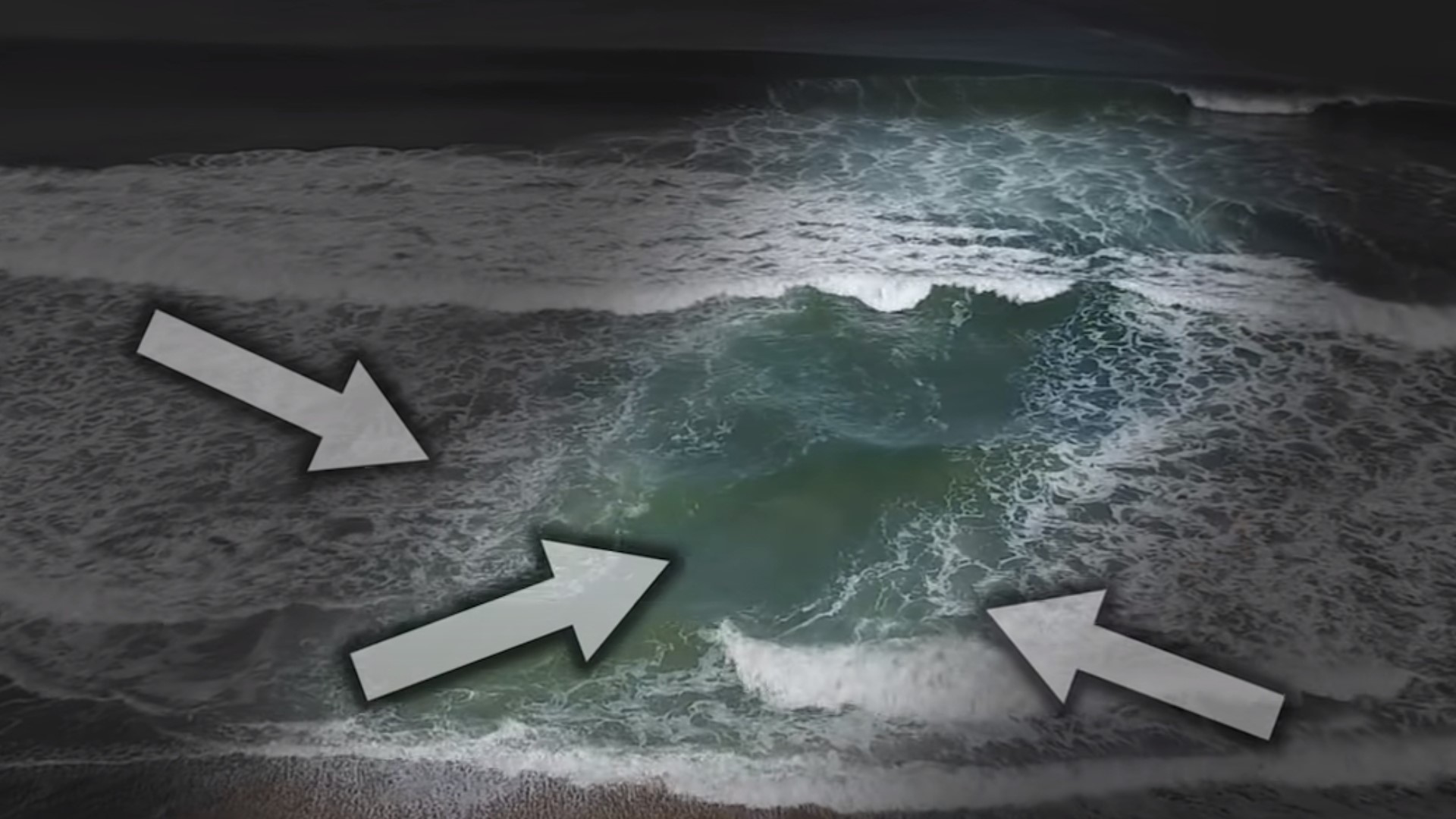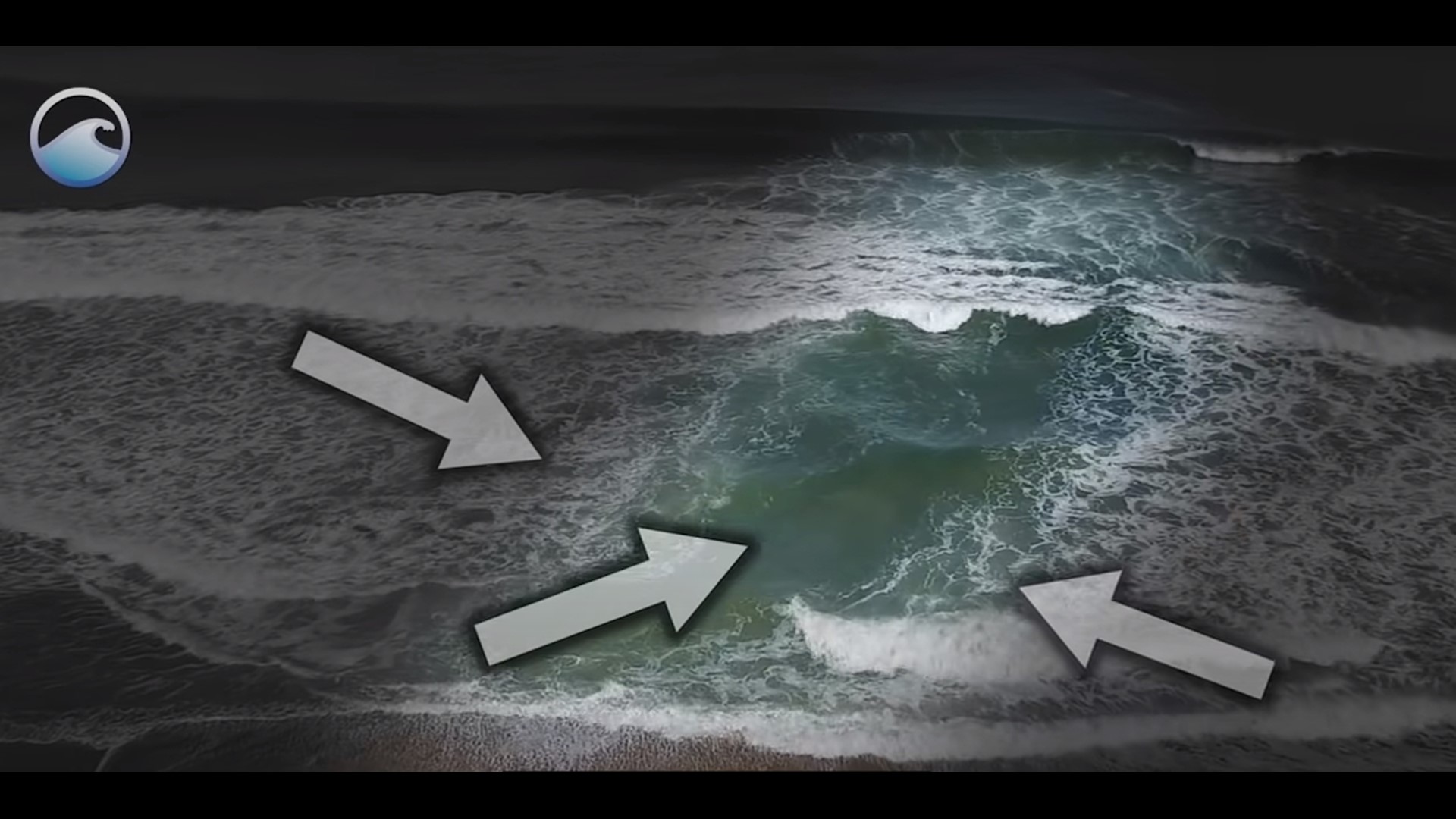Beach safety: What is a rip current?
Rip currents account for 80 percent of beach rescues, according to NOAA officials. Here's how to keep yourself safe.

The summer is here... the beaches are packed... and the red flags are flying.
Those red flags seen at beach entrances and lifeguard stands symbolize a danger in the water... rip currents, which can be deadly. We hear a lot about them, but what are they? What do they look like? What's the best way to get out of one?
Let's explain.
What is a rip current?
A rip current is a powerful, narrow channel of fast-moving water at the beach. If someone gets caught in a rip current, they can quickly be taken far out into the water. Rip currents account for 80 percent of beach rescues, according to the National Oceanic and Atmospheric Administration (NOAA).
People often panic when caught in a rip current and end up trying to swim directly back to shore, but this can cause exhaustion and lead to tragedy. It is best to keep calm and swim parallel to shore until you are away from the rip current, and then swim at an angle back to shore. Try to get someone's attention at the shore by waving your arms periodically, but don't overdo it. You want to save your energy.
How do rip currents form and what do they look like?
Rip currents form as incoming waves create an underwater sandbar close to shore, and the waves push more and more water in between the sandbar and the shore until a section of this sandbar collapses and the water rushes back toward the sea through a narrow gap, according to NOAA. Once the flowing water passes through the narrow gap, it begins to spread out. It is here where the velocity and strength of the rip current circulation begins to weaken considerably.
"Rip currents are present on many beaches every day of the year, but they are usually too slow to be dangerous to beachgoers," NOAA officials said. "However, under certain wave, tide, and beach shape conditions they can increase to dangerous speeds. The strength and speed of a rip current will likely increase as wave height and wave period increase."
Rip currents will look like a break in the waves coming to shore. NOAA officials suggest looking for differences in the water color, water motion, incoming wave shape or breaking point compared to adjacent conditions.
"A rip current is a horizontal motion, not a vertical motion. Rip currents do not pull people under the water; they pull people away from shore. The rip current is typically the strongest about a foot off of the bottom, which can cause your feet to be knocked out from under you, making it feel like something under the water was pulling you. This is where the incorrect term "undertow" comes from," NOAA officials said.
What do I do when I am caught in a rip current?
Do not panic. It is important to stay calm and conserve energy. Swim sideways, parallel to the shore, until you are out of the current. Then, you can swim back to the shore at an angle.
If you see someone caught in a rip current, NOAA recommends:
- If you see someone in trouble, get help from a lifeguard.
- If no lifeguard is available, have someone call 9-1-1.
- Throw the rip current victim something that fl oats – a lifejacket, a cooler, a ball.
- Yell instructions on how to escape.
- Many have died trying to help others. Don’t become a victim while trying to help someone else!
- Before you leave for the beach, check the latest National Weather Service forecast for local beach conditions. Many offices issue a Surf Zone Forecast.
- When you arrive at the beach, ask on-duty lifeguards about rip currents and any other hazards that may be present.
One mother's mission to end rip current drownings
Je'Sani Smith was an 18-year-old athlete and a strong swimmer. In April of 2019, he was swept away by a rip current on Padre Island and sadly, did not survive.
His mother, Kiwana Denson, formed a community task force that works to ensure visitors are aware of all the dangers they could encounter on our beaches.
"I have that drive and passion because I do not want someone else to succumb to that tragedy we suffered, it's very painful. Something you don't want to experience," Denson said.
Denson's task force included county and state officials, who all worked on ways to educate the public about the risk of rip currents and what to do when you get caught in one. Then, first ever Texas beach safety alert was created, the "Je'Sani Smith Beach Safety Alert."
The group then took their work to the Texas Legislature, and in 2021, House Bill 3807, also known as the Je'Sani Smith Act, was passed and signed into law.
It instructs cities, counties, as well as Texas Parks and Wildlife, to provide occupied lifeguard towers or mobile lifeguard units on each side of each pier, jetty, or other structure that extends into the Gulf of Mexico. The requirement is from Memorial Day to Labor Day.
That task force eventually became the Je'Sani Smith Foundation, which continues to work tirelessly to educate the public and even gives out scholarships in his name to Coastal Bend students.
The beach is supposed to be a fun, relaxing place. Through education and awareness, it can also be a safe place for family fun.


